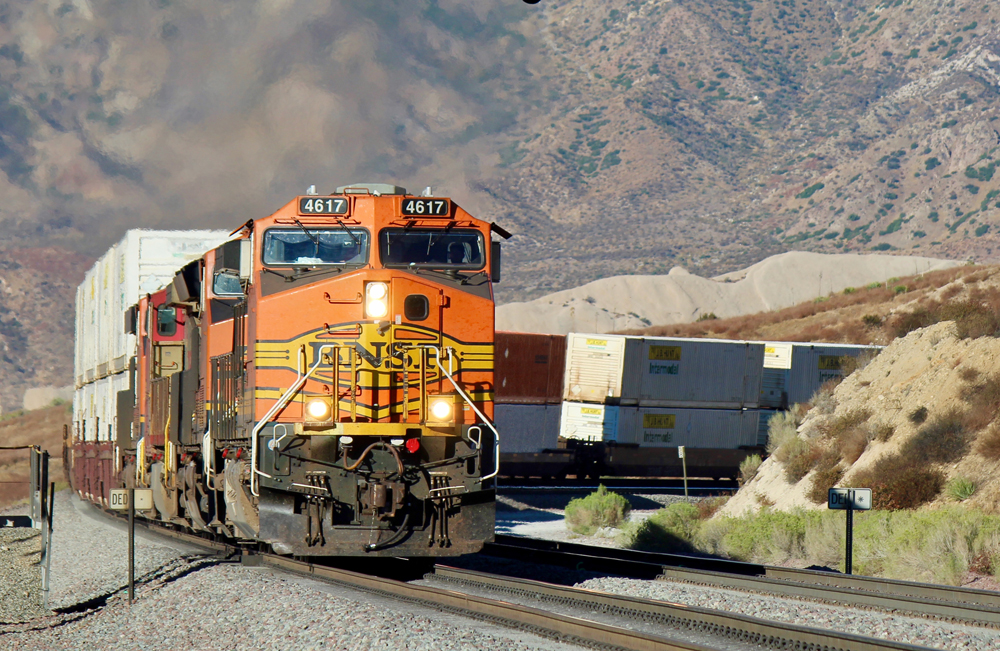
Sometimes big stories hide in plain sight. One of them is the jaw-dropping way BNSF Railway has outgrown the other three big U.S. Class I railroads.
Over the past two decades, BNSF has owned all of the tonnage growth on the big four U.S. systems. Its gross ton-miles are up 71% since 1996, BNSF’s first full year after the merger of Burlington Northern and Santa Fe. CSX Transportation, Norfolk Southern, and Union Pacific’s GTMs have declined since their mergers of the late 1990s, according to Surface Transportation Board data.
If your preferred yardstick is carloads and intermodal units, BNSF still comes out way ahead. From 2000 to 2019, BNSF’s volume is up 25%, NS’s is up 10%, and CSX and UP are both down, according to data the railroads report to the Association of American Railroads.
This feat from Fort Worth raises three big questions: How did BNSF do it? Can it keep it up? And are there any lessons here for the rest of the industry?
The answer to the first question is simple. BNSF has always had a focus on running a low-cost, efficient railroad with a bias for growth. The goal is a virtuous circle: Provide efficient and reliable service and you earn returns that allow you to invest for growth, which brings on more business, more returns, and more investment for growth.
Sift through the traffic data and you’ll find that BNSF was propelled by three things: Intermodal, grain, and, oddly enough, coal.
BNSF has doubled its intermodal volume, thanks in no small part to its unique revenue-sharing partnership with J.B. Hunt, which began in 1989 with the famous handshake between Hunt and Santa Fe President Mike Haverty. It’s hands down the premier intermodal railroad.
BNSF’s grain business is up 39% since 1996 due to its shuttle train capacity auction program, flexible rates, and investments in an industry-largest 30,000-car grain hopper fleet. Rates reflect the total delivered price of grain, including ocean freight costs, commodity prices, geopolitics, and global supply and demand. This allows origin elevators, many of which invested in 110-car loop tracks for shuttle trains, to remain competitive and ship more via BNSF.
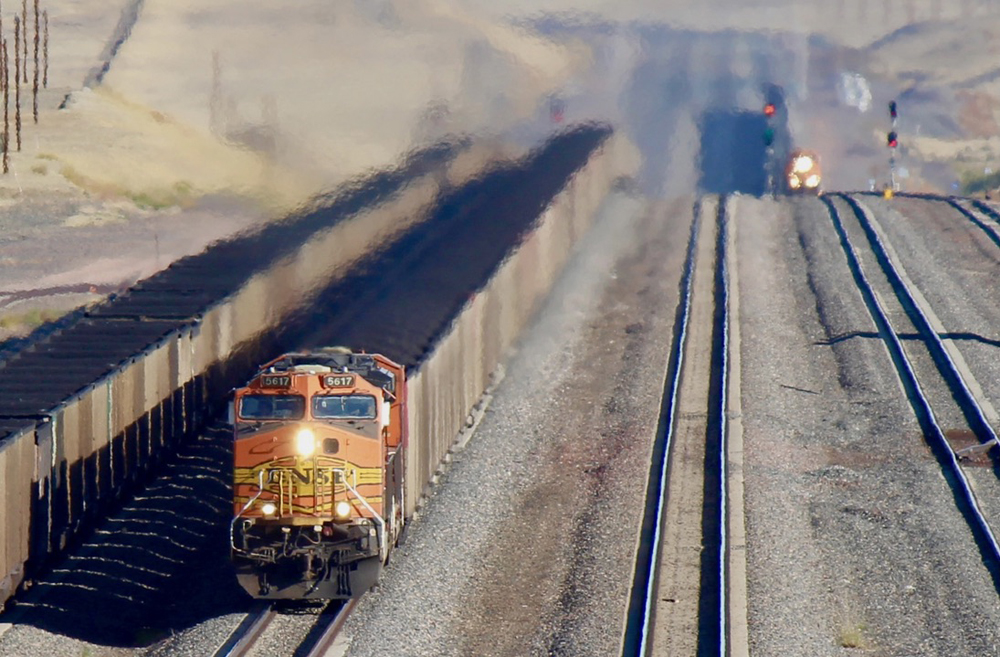
In coal, BNSF has won by not losing. It has stubbornly hung on to Powder River Basin thermal coal, with coal carloads down just 3% since 1996. And since the PRB peak of 2008, BNSF’s coal volume has fallen 28% vs. Union Pacific’s 59% slide.
Why the difference? BNSF wants power plants it serves to be able to compete with natural gas. “The choice was to allow the coal plant to convert to gas — or to reduce the transportation rate to remain competitive in the dispatch curve on the grid,” former BNSF CEO Matt Rose says. “We chose the latter because we didn’t care about only one measure, i.e. price going negative. It was overall whether or not it would be positive cash generation with a set of assets that have been used tremendously and were not going to be repurposed.”
Can BNSF keep this up? Well, that’s unclear. Coal will be a drag as coal-fired power plants are retired through 2030. Yet BNSF and J.B. Hunt have tightened their relationship and see tremendous growth ahead. The bet is that, on a volume basis, containers can replace coal.
A wildcard is BNSF itself. CEO Katie Farmer says BNSF is sticking with its tried-and-true strategy. But some fear BNSF will have to close its operating ratio gap with a resurgent UP, which could stifle growth on BNSF.
As for lessons from BNSF: You wonder what would happen if the other railroads ripped a page or two out of the BNSF playbook.

You’ll hear CSX, NS, and UP executives talk about taking on business that “fits the network,” meaning it meets a profit margin target. “We don’t think you choose the traffic that fits your railroad,” BNSF Chief Marketing Officer Steve Bobb says. The railroad doesn’t prune traffic to improve its operating ratio, either. “If there is a profitable growth opportunity, we’re going to focus on that, not on that business’s inherent operating ratio,” Bobb says.
Rose, who retired as BNSF’s executive chairman in 2019 and has been a critic of Precision Scheduled Railroading, thinks the other railroads are penny-wise and pound-foolish. “The rest of the industry really focused on cost reduction solely, which I think has hurt their ability to market their services to customers,” he said in an email.
He adds: “It really gets down to what rail CEOs and their executives are incentivized to do. Cutting crew starts, reducing daily local service, increasing train lengths are very tangible, very measurable, and very actionable. Growing your business is very hard.”
A railroad’s destiny has always been tied to its geography. In other words, you can go only as far as your map will take you. But BNSF’s outperformance says otherwise — and that how you use your railroad matters, too.
You can reach Bill Stephens at bybillstephens@gmail.com and follow him on LinkedIn and Twitter @bybillstephens
Note: Updated on Oct. 17, 2022, to correct and clarify traffic growth data. On a carload and intermodal unit basis, BNSF was not the only railroad to show growth. Norfolk Southern’s volume also has grown.






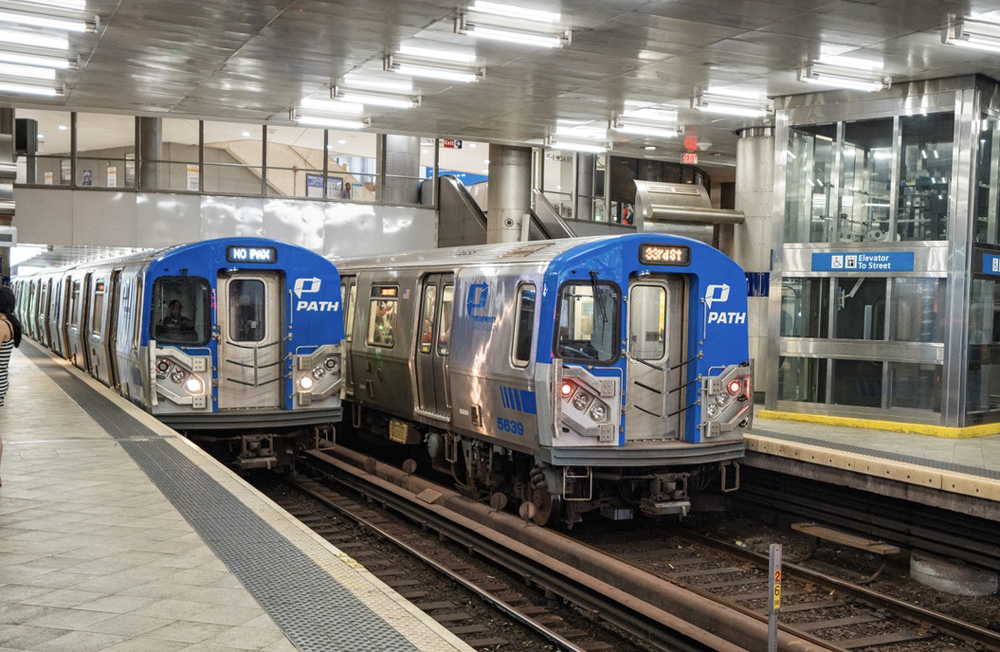
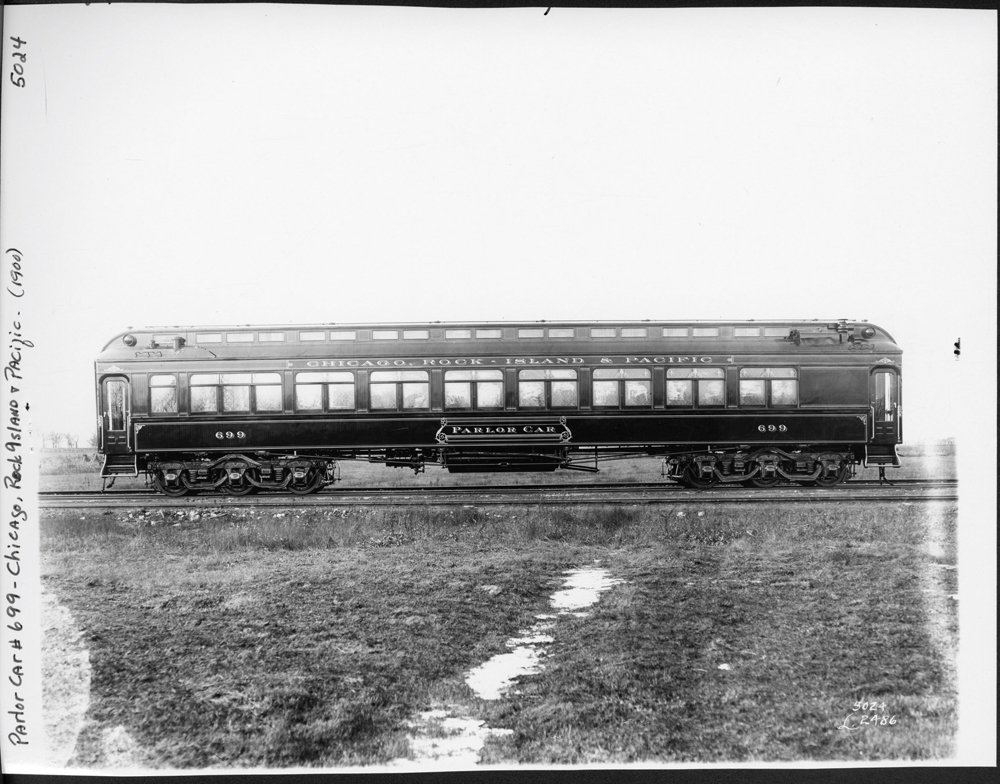
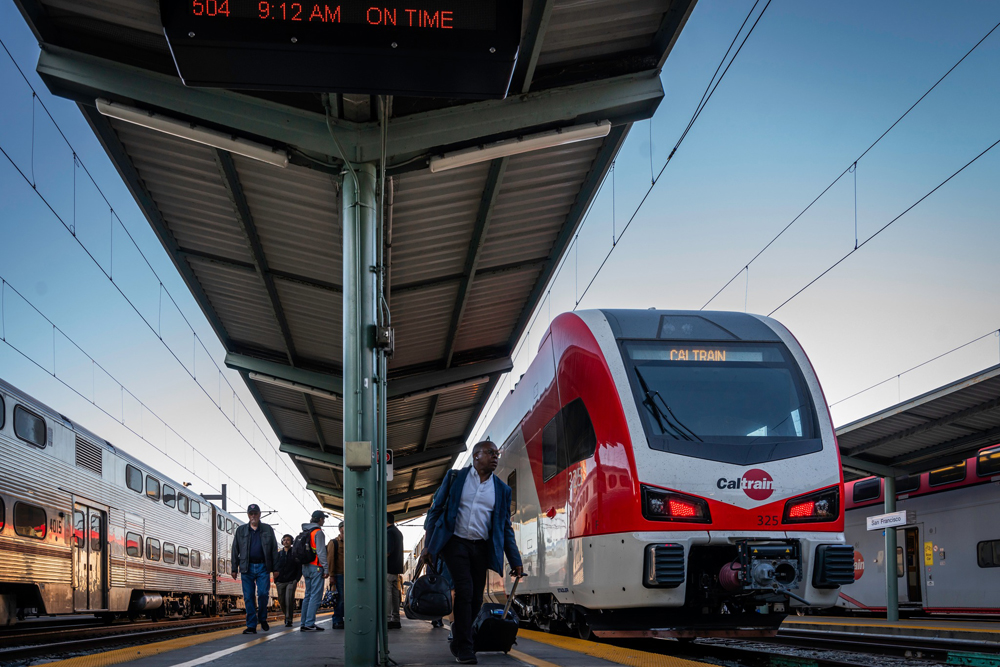
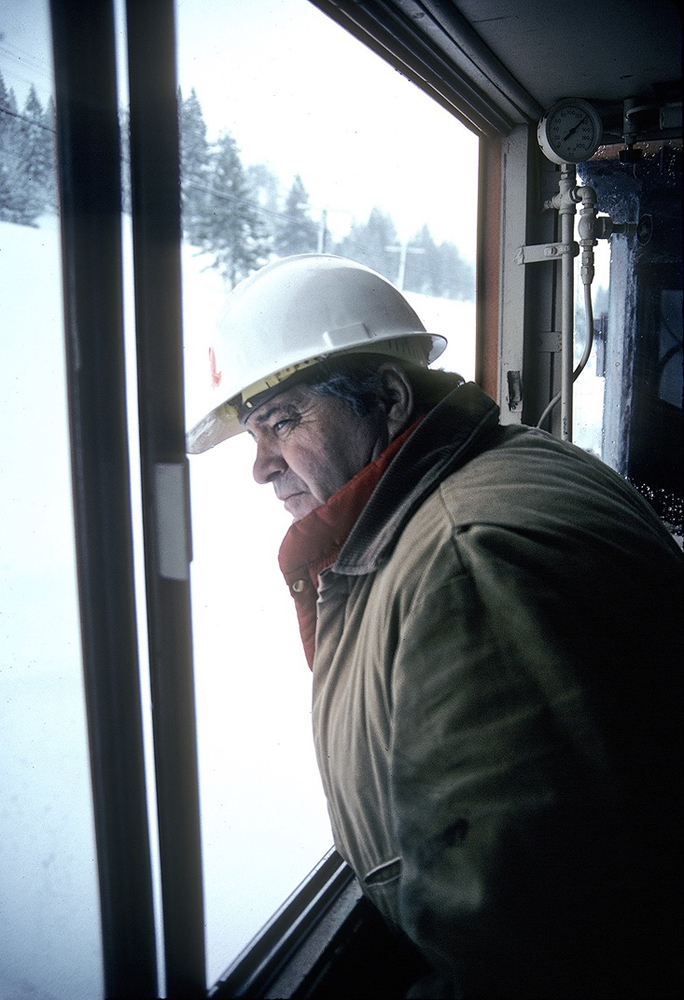




Continuous major capital investment in improving capacity – i.e. double track Chicago to LA, etc. – has been the other distinguishing mark of BNSF management – as others have noted, not subject to quarterly Wall Street expectations. Congratulations to the BNSF TEAM!!
Many opinions, but few numbers. Here are some, from the carriers’ 1q2022 reports. yes, it’s just one quarter, but perhaps still indicative.
BNSF UP
1q2022 1q2021 Delta 1q2022 1q2021 Delta
Revenue 5968 5901 10% 5900 5012 17%
Operating income 2041 1889 8% 2400 2016 19%
Opr inc / Revenua 34% 32% 41% 40%
One of the VERY first things I ever heard Mike Haverty say in a staff meeting after I hired on in 1990 was “You can’t starve a railroad into prosperity”.
BNSF is the historical legacy of at least four extraordinarily great men: James J. Hill, William Barstow Strong, Michael J. Haverty (for both the Hunt deal and the paint scheme) and Warren Buffet.
According to the Larry Gross article in the new Kalmbach History of Norfolk Southern at 40, it took NS almost 15 years to accomplish what we did at Santa Fe in less than 5 years in terms of increasing BOTH intermodal profitability and intermodal revenues.
One of the very first full color print ads to promote the new Super Fleet said simply” With a name like Santa Fe you expect us to be super.”
One thing the Santa Fe did was to hire some people (including Matt Rose) from the trucking industry; they understood how to manage traffic flows for profitability and how to compete with trucks. They also figured out how to reliably cost intermodal service.
Mr. Ray, I have to correct you. Matt Rose NEVER worked a day in his life for Santa Fe. He was hired by BN after deciding to leaved NS where he had been acquired as part of the NAVL acquisition way back in the day. I had been working for Allied Van Lines’ Commercial Division when I was hired by Santa Fe.
I was told by a professional: In my office I instruct my employees, NEVER, in my office, engage in discussing these three topics. 1. Politics 2. Religion 3. Sex
That admonition aside: reference Charles’ reply to William. Well “proof is in the pudding”. Seems a former CIC made people KNOW he was not bluffing on threats. Yes, he had a habit of being twitter crazy. But it has been said he was advised to do so, for attention and getting his point across. Too, his election/popularity/name recognition soared in the news pre-election due to his eccentric personality. Like poop, it stinks, but dead certain to get your attention and always dealth with, PRONTO. endmrw0726221059
This quote seem straight from The Sage himself: The answer to the first question is simple. BNSF has always had a focus on running a low-cost, efficient railroad with a bias for growth. The goal is a virtuous circle: Provide efficient and reliable service and you earn returns that allow you to invest for growth, which brings on more business, more returns, and more investment for growth. (Greyhound would be proud, he is a forum contributor)
Another Rose quote: Rose, who retired as BNSF’s executive chairman in 2019 and has been a critic of Precision Scheduled Railroading, thinks the other railroads are penny-wise and pound-foolish. “The rest of the industry really focused on cost reduction solely, which I think has hurt their ability to market their services to customers,” he said in an email.
These guys seem to know how to do business, RR included. endmrw0216221045
It’s really too bad now that the current BNSF management is ruining this great achievement with their disastrous Hi-Viz policy.
Trains had an article in the last year about railroad ‘marketing.’ My recollection was that the BNSF (and CSX too!) would return a customer call within maybe 24 hours, the other railroad would take several days longer. And Hunter Harrison was famously not interested in customer needs. When he took a trip on the Santa Fe (during the BNSF-CN merger talks) he told Krebs that he should slow down his intermodal trains to 50 mph to save money. Krebs also noted that the CN and BNSF had similar operating costs but the CN had a better operating ratio because its rates were higher. (Read Krebs’ autobiography).
The paragraph’s regarding what Rose said needs to be mandatory reading by all railroad exec’s and managers. Then they should put those principals to work. But, I doubt current management will ever do it.
It’s not just railroading that needsto look for the profitable business even if it doesn’t fit some arbitrary predetermined ratio. The problem has infected all of domestic production in capital intensive industries.
Bill:
Great column! I thought Santa Fe was doing things right back before the BNSF merger in the ‘90’s and picked up a number of shares. I kick myself now for instructing Vanguard not to sell my BNSF shares to Warren Buffett. Would I love to be a minority share holder now.
Landey, your right wing political insertions undermine your creditability. Thank the gods of whatever the misfit who preceeded him is no longer in the Oval Office throwing his lunch at the wall like a kid throwing a tantrum. He should have been made to clean up the mess himself. Now tell us just what Biden economic policies do not meet your criteria and.need revision.
Gee, William, Me a right winger? Gee, William, give me a break, I’m pro rail labor, pro passenger train subsidy, pro gun control, and totally anti-Trump who is exactly as you describe him. Makes me a moderate.
That Trump was an abomination doesn’t make the Biden/ Obama/ Buttigieg administration any good.
Best,
C.N.L.
BNSF is not a slave to operating ratio because it is owned by Berkshire Hathaway and they were told to manage it for the next hundred years, not the next three months.
The future will get here regardless of what is immediately profitable or whether a President imposes tarrifs or not. No business gets to hide under a rock and wish for the good old days. I remember the “good old days,” I worked for the Milwaukee Road for a few years 50 years ago. They were terribly badly managed, with one division dumping traffic onto the next division in order make the reports look good regardless whether that point was a 4 track yard at Avery, Idaho or not. Their brainstorm was to discontinue electrification just as oil prices spiked, in order make shareholders happy. They weren’t happy for long.
I thought the Milwaukee Road’s electrification infrastructure was antiquated by the 1970s.
It was. They had two options on the table: an offer from GE to upgrade the system, new motive power, close the gap, etc. or dieselize. They chose the latter under the belief the sale of the scrap copper would pay for the SD40-2s. Instead, the price of copper tanked and the second OPEC oil embargo spiked oil. Oops.
I can assure you BNSF is behaving just like the other Class 1’s at this point. The 60 day embargo on westbound traffic to California is an example of that.
Thanks for this article, Bill. It’s great news for us chronic BNSF fans. The question is, can BNSF keep it up in the current economic climate and the emerging labor dispute. BNSF is not independent from all else that is happening under the ruinous Biden/ Buttigieg/ Obama economic policies.